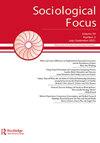Committing to the Streets: Activism among Former Gang Members as a Pathway to Personal and Community Change
Q2 Social Sciences
引用次数: 0
Abstract
ABSTRACT Deploying former gang members and ex-offenders as street-level “interrupters” remains a foundational strategy of the Cure Violence model of violence mitigation. Amidst program evaluations yielding mixed evidence for the model’s effectiveness in reducing violence, we still know relatively little about the individuals engaging in the high-risk work of interruption. This paper draws on a multiyear ethnography of interrupters to better understand the factors that motivate individuals to adopt and, in some cases, maintain a commitment to community-based violence prevention. Based on ethnographic data which involved street-level shadowing and 40 in-depth interviews with violence interrupters, we develop an original theoretical typology of commitment to violence prevention based on three categories: 1) Loyalists, 2) Straddlers, and 3) Exiters. We then utilize our in-depth interviews to account for the varying impacts of violence prevention work on the lives of the individual interrupters. Drawing from the scholarship on desistance and social activism in criminology and sociology, we argue that the organizational dynamics surrounding violence prevention work precluded the pathway to sustained personal transformation for the majority of interrupters in our sample. Yet for some interrupters, strong intra-organizational ties with leadership, coupled with personal agency over the implementation of violence interruption tactics, facilitated a transformed activist identity and a durable commitment to individual, and community, rehabilitation.走上街头:前帮派成员的行动主义是改变个人和社区的途径
将前帮派成员和前罪犯部署为街头“阻断者”仍然是“治愈暴力”减轻暴力模式的基本策略。在项目评估中,该模式在减少暴力方面的有效性得到了各种各样的证据,但我们对从事高风险打断工作的个人仍然知之甚少。本文借鉴了多年来的中断者民族志,以更好地理解激励个人采取并在某些情况下保持以社区为基础的暴力预防承诺的因素。基于民族志数据(包括街头跟踪和对暴力中断者的40次深度访谈),我们开发了一种基于三类的暴力预防承诺的原始理论类型:1)忠诚者,2)跨界者和3)退出者。然后,我们利用我们的深度访谈来解释暴力预防工作对个体中断者生活的不同影响。根据犯罪学和社会学中关于制止和社会行动主义的学术研究,我们认为,围绕暴力预防工作的组织动态阻碍了我们样本中大多数中断者实现持续个人转变的途径。然而,对一些中断者来说,组织内与领导层的紧密联系,加上个人在执行中断暴力策略方面的能动性,促进了积极分子身份的转变和对个人和社区康复的持久承诺。
本文章由计算机程序翻译,如有差异,请以英文原文为准。
求助全文
约1分钟内获得全文
求助全文

 求助内容:
求助内容: 应助结果提醒方式:
应助结果提醒方式:


